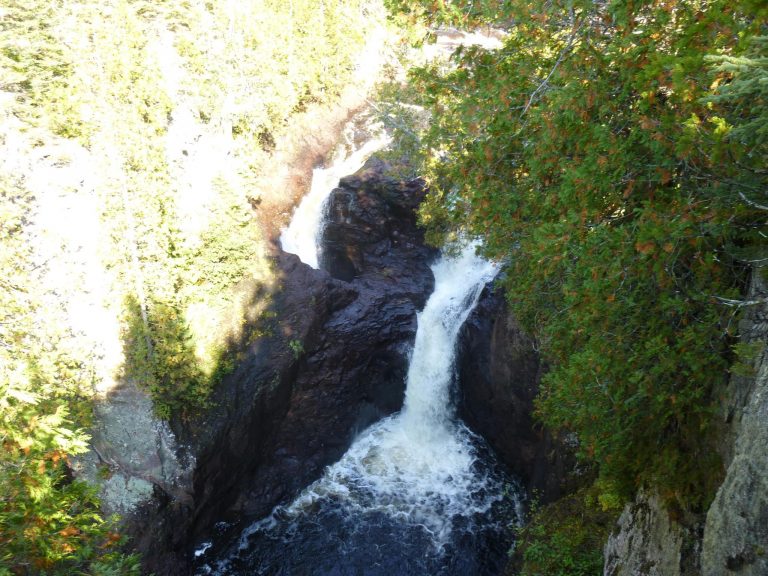The Mystery of Devil’s Kettle

Finally Unraveled
P.Moraski/Tower
On the rugged North Shore of Lake Superior, just outside Grand Marais, sits one of Minnesota’s most intriguing natural wonders—Devil’s Kettle Falls. Found within Judge C. R. Magney State Park, the Brule River splits in two as it cascades down a series of rapids. One side plunges down the standard route, continuing its journey toward Lake Superior. The other side, however, vanishes into a dark hole in the bedrock known as the “kettle.” For decades, no one could say for sure where the water went.
The mystery of Devil’s Kettle has fascinated visitors for generations. Early on, locals and tourists alike speculated wildly. Some believed the water connected to underground rivers or lakes. Others thought it might reemerge far downstream or even bypass Lake Superior altogether. As word spread, it became one of the most talked-about natural puzzles in the state.
Adding to the lore, countless experiments were carried out by curious minds. People tossed in ping pong balls, dye, even logs—none of which were ever seen again. The water simply disappeared, feeding theories that Devil’s Kettle was a bottomless pit.
In 2016, the Minnesota Department of Natural Resources (DNR) decided to put the mystery to rest.
Hydrologists measured water volume both above the falls and downstream. What they discovered was surprisingly straightforward: the amount of water entering the “kettle” matched the amount flowing downstream. That meant the water wasn’t escaping to some faraway cavern—it was simply rejoining the Brule River underground before resurfacing.
In 2017, the DNR confirmed their findings. The kettle wasn’t magic or bottomless, but rather an example of unique geology. The water pours into fractures in the volcanic rhyolite rock and then rejoins the river below the visible falls. The experiments with dye and objects had failed in part because of the speed and turbulence of the water, which made tracking them nearly impossible.
Though science may have solved the riddle, the appeal of Devil’s Kettle remains. The sight of half a river vanishing into rock is just as mesmerizing today as it was before the explanation. Hikers along Judge C. R. Magney State Park’s trails still pause in awe, leaning over railings to watch the water swirl into the mysterious hole.
Devil’s Kettle is a reminder of how nature can inspire both imagination and inquiry. The story of its mystery—how it baffled generations, drew in amateur sleuths, and finally yielded to science—only adds
to its charm as one of Minnesota’s most captivating natural landmarks.

